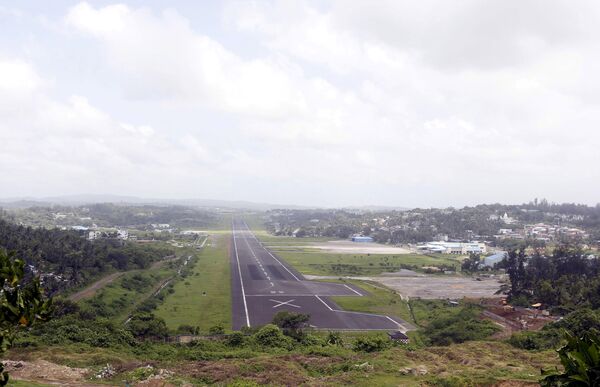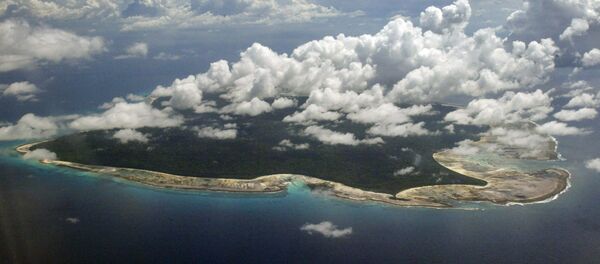Marking another milestone in India’s digital transformation, Prime Minister Narendra Modi on Monday inaugurated the ‘Submarine Optical Fibre Cable’ in the Andaman and Nicobar Islands – a cluster of roughly 300 islands located in the Bay of Bengal.
The project's 2,313 km of undersea high-speed broadband cable will connect Port Blair, the capital of the Andaman and Nicobar Islands, to the city of Chennai, the capital of the state of Tamil Nadu in southern India.
India's PM Modi kicked off the first stage of the cable-laying project, which is estimated to cost around $163.2 million (12.24 bln INR), on 30 December 2018 at Port Blair.
OFCs (optical-fibre cables) are used to transmit light. Typically, the elements in optical fibres are coated with plastic layers and protected by container tubes suitable to the environment where these cables are deployed.
What to Know About the Sea Internet Cable Project
- Seven of the Andaman & Nicobar Islands other than South Andaman Island (where Port Blair is located) are connected: namely, Swaraj Dweep (Havlock), Long Island, Rangat, Little Andaman, Kamorta, Car Nicobar and Greater Nicobar.
- Port Blair will have 400 GB/s Internet access; 200 GB/s speed will be provided to the other islands which are connected.
- Work laying the undersea cable was executed by state-owned BSNL in record time: less than 24 months.
- 4G mobile services will get a big boost on these islands due to OFC connectivity.
- Digital services like tele-education, tele-health, e-Governance services and tourism on the islands will receive a big boost.
Big Boost to Business
With this inauguration, PM Modi aims to ensure high speed internet connectivity and better telecom networks in the otherwise comparatively underdeveloped region of the Andaman and Nicobar Islands – which welcomes a large number of tourists from around the world. As of now, the islands remained plagued by slow internet and mobile connectivity because of the limited bandwidth provided via satellite.
Prime Minister Modi also mentioned the speedy construction of the deep draft inner harbor and the proposal to construct Trans Shipment Port in Great Nicobar at an estimated cost of about $1.2 billion. Modi said this would enable big ships to anchor and would increase India’s share in maritime trade, along with new employment opportunities.
Strategic Importance
For the past few years, the Indian government has expedited the development of its strategy to enhance its ability to conduct surveillance of Chinese warships and submarines entering the India Ocean Region (IOR) through the nearby Malacca Straits — one of the busiest shipping lanes in the world.
India’s federal information and broadcasting minister Prakash Javedkar also highlighted that the Submarine Optical Fibre Cable project will strengthen India’s maritime security and make the Andaman and Nicobar Islands “Digitally Independent”,
Strengthening India's strategic maritime security.
— Prakash Javadekar (@PrakashJavdekar) August 10, 2020
PM Shri @narendramodi will dedicate his dream project 'The Submarine Optical Fiber Cable' In Andaman and Nicobar Islands to the nation on 10th August 2020.#AndamanNicobarWithPM pic.twitter.com/Y7kqGQIs77
The Indian navy deploys warships, fighter jets and spy planes along critical sea lanes of communications and choke points including Strait of Malacca and claims that it has a dominant position in the region despite a strong Chinese naval buildup in recent years. S. Andaman Island is located around 200 km from the mouth of the Strait of Malacca — a vital geo-strategic point which connects the South China Sea to the Indian Ocean.

The Indian Navy has so far commissioned several amphibious landing craft at tri-service command headquarters in Port Blair. It has also stationed long-range maritime reconnaissance aircraft Poseidon 8I planes at the naval base in Andaman. Soon, India's Defence Research and Development Organisation (DRDO) will also set up a long-range missile facility on South Andaman's Rutland Island.
India will also construct its own array of seabed-based surveillance sensors stretching from Indonesia’s Sumatra Island to Indira Point in the Andaman and Nicobar Islands. The seabed based surveillance sensors would monitor all submarine or naval ships patrolling the South China Sea and Indian Ocean Region.
People Call it Game Changer
Calling the project a “game changer” in the history of Andaman and Nicobar Islands, thrilled Indians have warmly welcomed the inauguration of the Submarine Optical Fibre Cable project. The hashtag -- #AndamanAndNicobarWithPM – is trending at the top spot in Twitter India.
The Submarine ofc will be a game changer in the History of our Andaman and Nicobar islds,with high speed internet new opportunities of employment,education and business to open. #AndamanNicobarWithPM #AndamanNicobarThanksModi@PMOIndia @rsprasad @VishalJolly11 @ajoy_bairagi pic.twitter.com/V6WJDmg2Aa
— Capt Sarat (@captsarat) August 10, 2020
Inauguration of OFC will ensure high speed broadband connectivity and open up all the doors to boost up the economy and will be a gamechanger for many sectors..!@narendramodi@rsprasad#AndamanNicobarWithPM #AndamanNicobarThanksModi pic.twitter.com/62VI1EsJ44
— Sankshep Ratan🇮🇳(संक्षेप रतन)🚩 (@sankshep_sr) August 10, 2020
The whole Optical fibre cable project costing ₹1224 crores is completed in record time without a single bit of corruption. This showcases the transparency in the functioning of Narendra Modi ji's government.#AndamanNicobarWithPM #AndamanNicobarThanksModi
— Adarsh Ilango 🇮🇳 (@_adarsh_ilango) August 10, 2020
Small enterprises will benefit with the opportunities in e-commerce. This will be a result of the launch of OFC project by Prime Minister Modi ji.#AndamanNicobarWithPM #AndamanNicobarThanksModi
— Adarsh Ilango 🇮🇳 (@_adarsh_ilango) August 10, 2020
The Indian government has been investing heavily in OFCs in a bid to provide high speed internet throughout the country.
India’s OFC market stood at $881.5 million in 2019 and is projected to grow at a compound annual growth rate (CAGR) of 19.7 percent to reach $2.1 billion by 2024, market analysis firm TechSci Research had recently reported.







